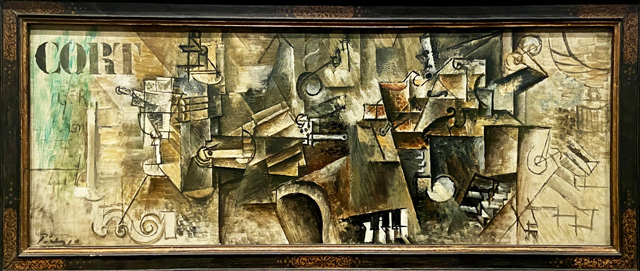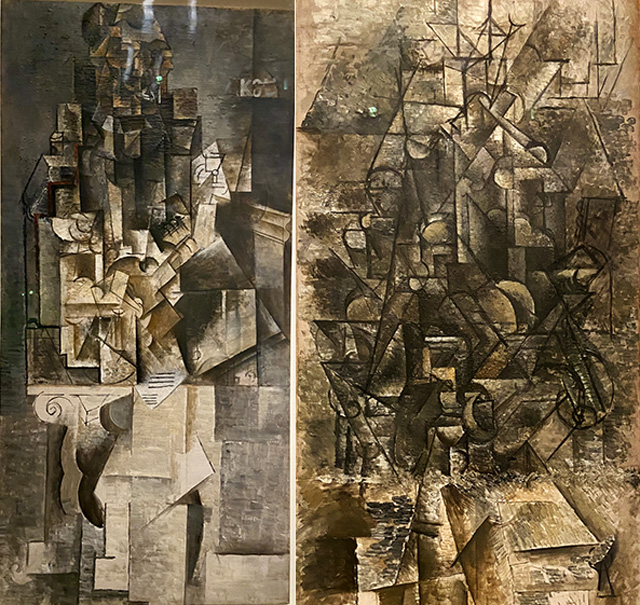2023 is the Year of Picasso in NYC

By Elias Dominguez
On display now at the Museum of Modern Art (MoMA), The Metropolitan Museum of Art (The Met) and the Hispanic Society Museum & Library—not one, not two, but—three exhibitions commemorating the memory of Pablo Picasso and his outsized impact on modern art.
It is a storied career on view at three of the city’s most storied institutions. This instance of serendipity was made possible thanks in part to the Musée National Picasso-Paris and the French and Spanish governments through their Picasso Celebration 1973-2023 program, a yearlong initiative to mark the 50th anniversary of the famed icon’s passing.
The galleries come on the heels of two prior Picasso Celebration shows held during the summer at the Guggenheim and Brooklyn Museum. These three represent a can’t-miss deal, however, as they can be attended for as little as $1!
At MoMA, the Picasso in Fontainebleau gallery is entirely focused on the works produced from a small studio whilst Picasso was on vacation in Fontainebleau, France, during the summer of 1921. It features a pair of two gargantuan, six-foot-high canvases mirrored as they would have originally been set up in the makeshift garage-turned-studio. Titled “Three Musicians” and “Three Woman at the Spring” they showcase what the artist is most known for, Cubism, as well as his foundations as a classicist, respectively.
-
picassogallery5
http://bronxjournal.com/wp-content/uploads/2024/01/picassogallery5-640x480.jpg
-
picassog
http://bronxjournal.com/wp-content/uploads/2024/01/picassog-640x480.jpg
-
picassog7
http://bronxjournal.com/wp-content/uploads/2024/01/picassog7-640x480.jpg
-
picassog6
http://bronxjournal.com/wp-content/uploads/2024/01/picassog6-640x480.jpg
-
picassogallery5
http://bronxjournal.com/wp-content/uploads/2024/01/picassogallery5-640x480.jpg
Other notable works include the cubist “Harlequin,” another canvas of impressive size and quality. The dialogue-laden exchange between abstraction and representation, “Studies” (which is itself yet another example of a movement Picasso is credited with popularizing, that of collage). “Maternity” would be a somewhat plain portrait of a mother and child in any other exhibition, yet here is a display of the range and diversity that defined Picasso in Fontainebleau.

Picasso: A Cubist Commission in Brooklyn may not amount to the grandeur of Picasso in Fontainebleau, yet is dedicated to World War I-era works that would mark the artist’s rising stock in the U.S. The Met’s exhibition ironically features an array of cubist paintings that initially were rejected by the institution when they were first exhibited. The paintings mark an evolution of Cubism to the very “brink of abstraction,” say the curators. They proved the movement’s viability as a decorative art form–after over century in waiting– and are now featured in the world-famous museum.
From the raw abstraction of “Nude Woman” and “Reclining Woman on a Sofa”—whose titles provide the only clues to identifying their subjects—to the odd-sized paintings of still lifes and Picasso’s penchant for stringed instruments of “Still Life on a Piano” and “Man with a Guitar,” respectively, Picasso: A Cubist Commission in Brooklyn records this turning in Cubism that would come to be known as “open form.”


Picasso’s connection to and “engagement with two literary giants of the 17th century, or Spain’s Siglo de oro,” is examined in Picasso and the Spanish Classics at the Hispanic Society Museum & Library. The collection features various instances of the Spaniard’s appropriation and interpretation of Miguel de Cervantes’ timeless classic Don Quixote and various poems from the wordsmith Luis Góngora y Argote packaged for the French audience of the country he called home.
The exhibition does not feature any cubist works but rather a variety of styles created using aquatint, such as “Don Quichotte et Sancho Panza” and the caricaturesque “Potrait of Luis de Góngora after Potrait by Diego Velázquez,” that captures the tone and spirit of the sourced material.

 While the exhibitions, which gather selected works from the various flashpoints of the prodigious painter’s career, are certainly the highlight of the transcontinental event, its programming also includes expert talks, archival material and publications from the curators in collaboration with a diverse pool of perspectives from all walks of life, alongside international symposiums and the opening of a Center for Picasso Studies.
While the exhibitions, which gather selected works from the various flashpoints of the prodigious painter’s career, are certainly the highlight of the transcontinental event, its programming also includes expert talks, archival material and publications from the curators in collaboration with a diverse pool of perspectives from all walks of life, alongside international symposiums and the opening of a Center for Picasso Studies.
NYC residents and CUNY students are eligible to take advantage of special offers granting them access to these institutions at low or no-cost.
MoMA, in collaboration with UNIQLO, offers free tickets to all residents on the first Friday of each month and is, otherwise, free of charge to all CUNY students. The Met allows all residents to donate an amount of their choosing, whereas the Hispanic Society Museum & Library operates as an entirely free museum.
Picasso in Fontainebleau is scheduled to run through February 17, Picasso: A Cubist Commission in Brooklyn is scheduled through January 14 and Picasso and the Spanish Classics through February 4.
Saved under Culture, Featured Slide
